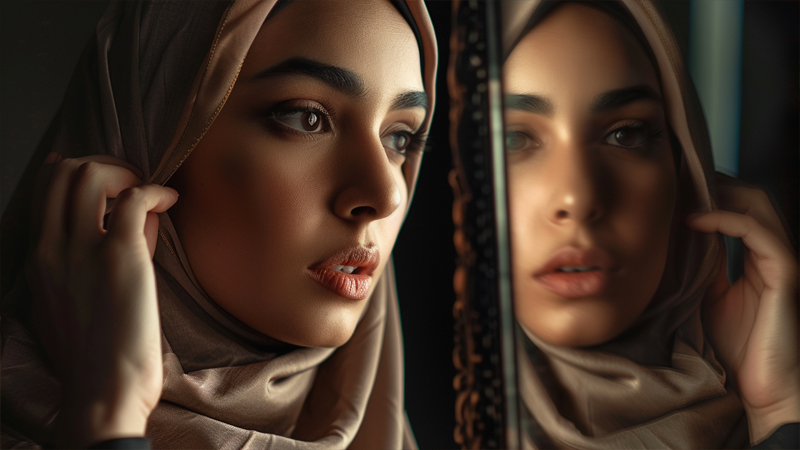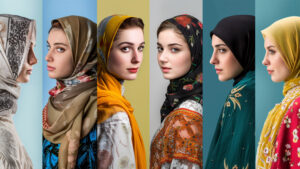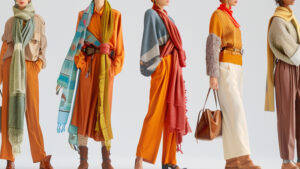
I once wore a hijab-style scarf to a cultural festival—only to freeze when a little girl asked, “Are you Muslim too?” My face burned hotter than the summer sun.
Wearing hijab as a non-Muslim isn’t inherently offensive, but it requires cultural sensitivity, respect, and understanding of its religious significance.
Let’s navigate this delicate topic together.
How does cultural sensitivity and respect factor into wearing a hijab as a non-Muslim?
“It’s not a costume,” my Muslim friend said when I asked if I could wear hijab for a themed party1.
Cultural sensitivity means understanding hijab’s spiritual weight—not treating it as a fashion accessory or trend.

The fine line between love and theft
I’ve seen:
- Appreciation: A non-Muslim teacher wearing hijab to support her Muslim students during Ramadan2.
- Appropriation: A celebrity using hijab as a “bold fashion statement” without crediting its roots.
My Syrian neighbor shared: “When you wear hijab, you carry our stories. Wear it with care.”
| Scenario | Perception |
|---|---|
| Wearing hijab to a mosque | Respectful |
| Using it for Halloween | Offensive |
| Adopting styles without context | Problematic |
How can you differentiate between fashion and faith when choosing to wear a hijab?
“Fashion fades, faith endures,” my hijab stylist friend3 says.
Fashion focuses on aesthetics; faith centers on devotion. Wearing hijab as a trend risks erasing its spiritual meaning.

The mirror test
Ask yourself:
- Am I wearing this to look stylish or to honor modesty?
- Would I wear this to a religious event?
- Can I explain why I’m wearing it?
I once saw a non-Muslim influencer4 wear a hijab for a photoshoot—then post, “Channeling my inner desert queen.” The backlash was swift.
What reactions might you encounter from the Muslim community when wearing a hijab as a non-Muslim?
“Some will smile, some will side-eye,” my Palestinian friend warned.
Reactions vary: Some appreciate solidarity, others feel protective of their sacred symbol.

The spectrum of responses
From my observations:
- Positive: A non-Muslim nurse wore hijab to comfort her Muslim patients—earning heartfelt thanks.
- Negative: A tourist wore hijab as a “fun experiment” at a mosque, offending worshippers5.
My Egyptian friend shared: “When you wear hijab, you step into our shoes. Be ready for the journey.”
What guidelines should you follow to respectfully adopt hijab styles as a non-Muslim?
“Ask first, wrap later,” my Somali mentor advised.
Learn the history, credit the culture, avoid sacred styles, and support Muslim creators when adopting hijab styles.

The respect checklist
Here’s what I’ve learned:
- Research: Understand hijab’s religious significance6.
- Ask permission: Especially in sacred spaces7.
- Avoid stereotypes: Don’t use hijab to “play Muslim.”
- Support ethically: Buy from Muslim-owned businesses.
When my cousin wore hijab to her Muslim friend’s wedding, she practiced wrapping for weeks—“I wanted to get it right.”
Conclusion
Wearing hijab as a non-Muslim can bridge cultures—if done with respect, humility, and heart.
-
Explore this resource to understand the cultural sensitivity required when wearing hijab, especially in themed contexts. ↩
-
Explore this resource to understand Ramadan's deep spiritual meaning and its cultural importance in the Muslim community. ↩
-
Exploring this resource will provide insights into the role of hijab stylists in promoting cultural understanding and respect. ↩
-
Explore this resource to understand the cultural implications and responsibilities of non-Muslim influencers wearing hijab. ↩
-
Explore diverse viewpoints from worshippers to understand the cultural significance and sensitivities surrounding hijab. ↩
-
Explore this resource to gain a deeper understanding of the hijab's spiritual meaning and its importance in Muslim culture. ↩
-
Exploring this resource will deepen your understanding of sacred spaces and their importance across cultures. ↩




